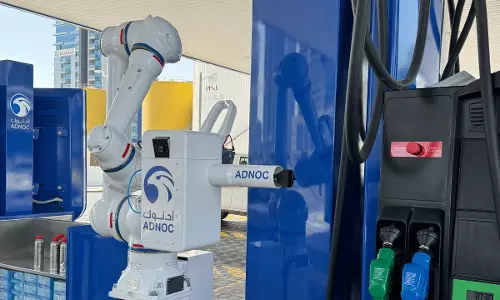
Superbug-boosting harmful pollution fuels "silent pandemic"
text_fieldsParis: According to a new UN study released on Tuesday, managing increasingly bulletproof superbugs that might kill tens of millions of people by the middle of the century requires containing and cleaning up environmental contamination, especially in waterways.
Antimicrobial resistance (AMR), one of the biggest threats to global health in the near future, is cited by the World Health Organization as having killed 1.27 million people in 2019. Superbugs are bacteria strains that are resistant to antibiotics.
The UN estimates that AMR might cause up to 10 million deaths annually by 2050.
Everything from toothpaste and shampoo to cow's milk and wastewater contains disinfectants, antiseptics, and antibiotics that can make microorganisms more resilient.
According to a recent assessment released on Tuesday, pollution is a major factor in the "development, transmission, and spread" of AMR, and it is vital that environmental cleanup efforts are made, AFP reported.
“With increasing pollution and lack of management of sources of pollution, combined with AMR in clinical and hospital settings and agriculture, risks are increasing,” said the report from the UN Environment Programme.
Antibiotic resistance is a natural occurrence, although it has been worsened by the overuse and inappropriate use of antibiotics in people, animals, and plants.
As a result, antibiotics may no longer be effective in treating the infections they were made to treat.
The pharmaceutical and chemical manufacturing industries, together with agriculture and health care, were cited in a UN report released on Tuesday as contributing to the problem's escalation.
AMR may be exacerbated by herbicides used on farms to control weeds, and heavy metals are also a factor.
Antimicrobials seep into the food chain after entering the environment (they have been discovered in fish and cattle), and they can then return to the companies that make common toiletries, for example.
The Ganges River in India and the Cache la Poudre River in the US state of Colorado both contain antimicrobial resistance genes, according to a UN study.
“This is a real issue, because rivers are often the source of our drinking water,” Jonathan Cox, senior lecturer in microbiology at Britain’s Aston University, told AFP.
“It’s already the silent pandemic,” warned Cox, who is not linked to the UN study. “It is becoming the next pandemic without us really recognizing it.”
The UN added that prevention is key.
“Fuelled by population growth, urbanization and growing demand for food and health care, we can expect an increase in the use of antimicrobials and pollutant releases into the environment,” it said.
Governments and international organisations were urged by the UN to address "key pollution sources," such as sewage, city waste, health care, pharmaceutical production, and intensive crop sectors.
Since AMR is so widespread, according to Cox, solutions must also be worldwide.
One solution is to concentrate on clinical methods, such as enhancing quick testing for illnesses to prevent incorrect antibiotic prescriptions.
The removal of antimicrobials through better wastewater management is another. However, such procedures are challenging and expensive.
“The technology is out there, it just isn’t being employed because governments don’t care so much about the environment as they do about the bottom line,” Cox said.
























